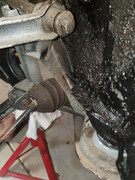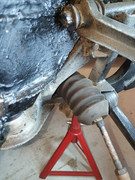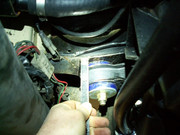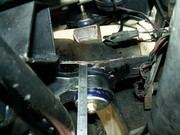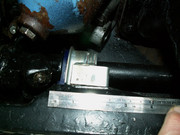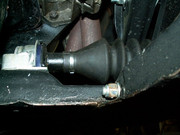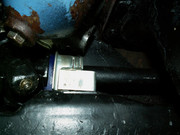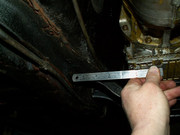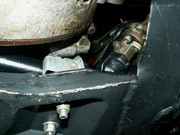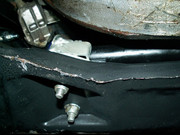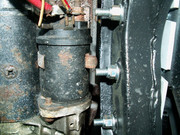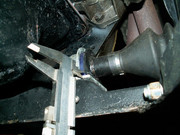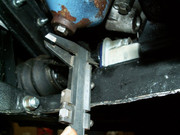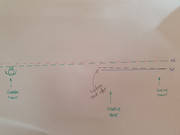I did some more investigation and took some measurements and photos. Photos in random dump order below. Long post follows sorry.
For the measurements it's not easy to be definitively accurate but with combo of 6 inch steel rule and vernier caliper I measured :
- subframe to body gap at front NS 26mm OS 27mm
- and then at rear from lower lip of subframe NS 17mm OS 19mm
- also rear gap by putting caliper vertically near suspension bracket NS 13mm OS 10mm
- and rear gap by resting end of ruler on subframe NS 16mm OS 12mm
And one other angle measurement at rear NS 10mm OS 9mm
These measurements are all"OK" but probably +/- 1mm. Having said that the data indicates the subframe is nearer the body on the OS. You will also see from the photos that there is a degree of concave bowing on the chassis leg faces on both sides of the car. This may not mean anything though
A few things :
1) Re Rons comments I'm struggling - given the engine is bolted to the subframe and that is the issue we are addressing in terms of the engine then being too close to the steering rack clamp - why does it matter if the subframe is closer to the body? Obviously collapsing chassis legs all bad for other reasons but in terms of these specifics I can't see how it has as bearing
2) Re Rons comments on gearbox sitting lower I get that principle but what is the spacer of which you speak? I thought I put this back together with the only leftover part being the "outside" rectangular dished plate.
3) Opinions on chassis legs and photos in general would be appreciated
4) Steering rack clamp assy - does anyone know where to obtain a decent one? Rimmers are out. Wins and Quillers look like they have stock but have written to ask
5) Replacement chassis legs. Should it come to this am I right that the Club stocks these? Can they be shipped to Australia and assume they include the tube and related end bits/flange etc?
Re 5) how much of the car do you have to take apart to replace these? I have to admit I just don't get how this is all supposed to sit together as will be evident if you go and look at the thread from 2015. Yes unbelievable, looked back and this has been going on over 4 years on and off.
So the chassis leg includes a tube and on the lower face the tube sticks through the leg and presents as a sort of washer/flange with short locating tube sticking through. In due course the suspension bush cup locates against this with conical suspension bush in-between.
Chassis leg is welded to floorpan. Top of chassis leg tube thus sits vertically and top of tube does .... something.... at inner wing. Either goes through it or sits there or is welded to it? ***
And thus when the whole thing is bolted up its a hard washer and bolt clamp at top of inner wing, zero compression across depth of chassis leg and then bush between subframe and chassis leg and second conical bush below per above. All of the measurements would have to be sufficiently precise that when clamped a) the subframe is located in the right place b) as suspension cup is tightened it locates on the chassis leg tube and tube protrusion is long enough that bush can be properly clamped before the cup reaches the face of the chassis leg
Maybe I do understand it. But how the heck would to locate the subframe in the right place to do this? Presumably you have to put faith in the front subframe locations and then just position the replacement legs so they are in line?
And note from *** above I know the tube is missing on one side - pretty sure it is the OS ..brain fade.. and was fixed up with modified tube used for front subframe mounts. Also that inner wing face on NS is dodgy as part of the process but nowhere near very dodgy and was fixed up with epoxy metal.
Still can't see though why this matters in the context of the engine to rack mount gap - both are bolted to the same thing !
Thanks, mark
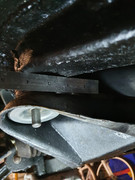
NS chassis leg end concave
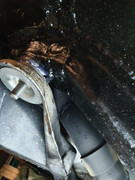
NS chassis leg end
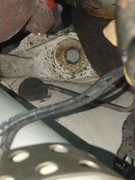
NS rear mount top
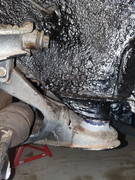
NS rear subframe gap 1
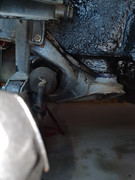
NS rear subframe gap2
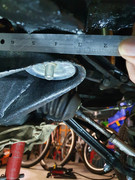
OS chassis leg end concave
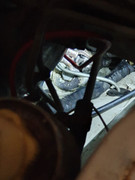
OS rear mount top

OS rear subframe gap1

OS rear subframe gap2

OS subframe front gap

